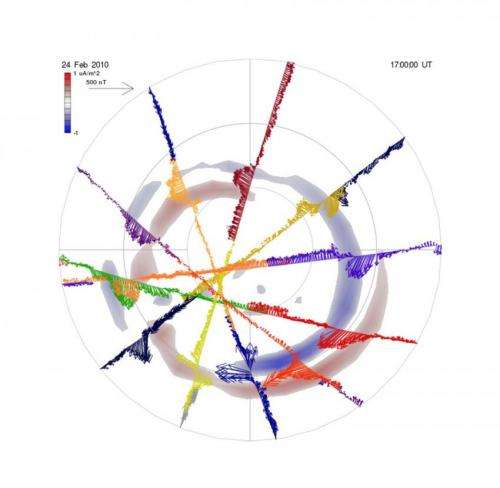Observing the Birkeland currents

When the supersonic solar wind hits the Earth's magnetic field, a powerful electrical connection occurs with Earth's field, generating millions of amperes of current that drive the dazzling auroras. These so-called Birkeland currents connect the ionosphere to the magnetosphere and channel solar wind energy to Earth's uppermost atmosphere. Solar storms release torrential blasts of solar wind that cause much stronger currents and can overload power grids and disrupt communications and navigation.
Now for the first time, scientists are making continuous, global measurements of the Birkeland currents, opening a new window on our understanding of our home planet's response to solar storms. Using the Active Magnetosphere and Planetary Electrodynamics Response Experiment, based on the 66 Iridium satellites orbiting the Earth, authors of a Geophysical Research Letters study have discovered that Earth's response to onsets in forcing from the solar wind occurs in two distinct stages.
Currents first appear near noon in the polar regions and remain steady for about half an hour. Then the second stage begins, when strong currents appear near midnight and eventually join the initial currents near noon. Most of the solar wind energy is deposited in the polar atmosphere by processes initiated in the second stage. The authors note that scientists are working to understand how the delay between the first and second stages could give near-term warning of impending space weather disruptions.
More information: Anderson, B. J., H. Korth, C. L. Waters, D. L. Green, V. G. Merkin, R. J. Barnes, and L. P. Dyrud(2014), Development of large-scale Birkeland currents determined from the Active Magnetosphere and Planetary Electrodynamics Response Experiment, Geophys. Res. Lett., 41, 3017–3025, DOI: 10.1002/2014GL059941
Journal information: Geophysical Research Letters
Provided by Wiley



















